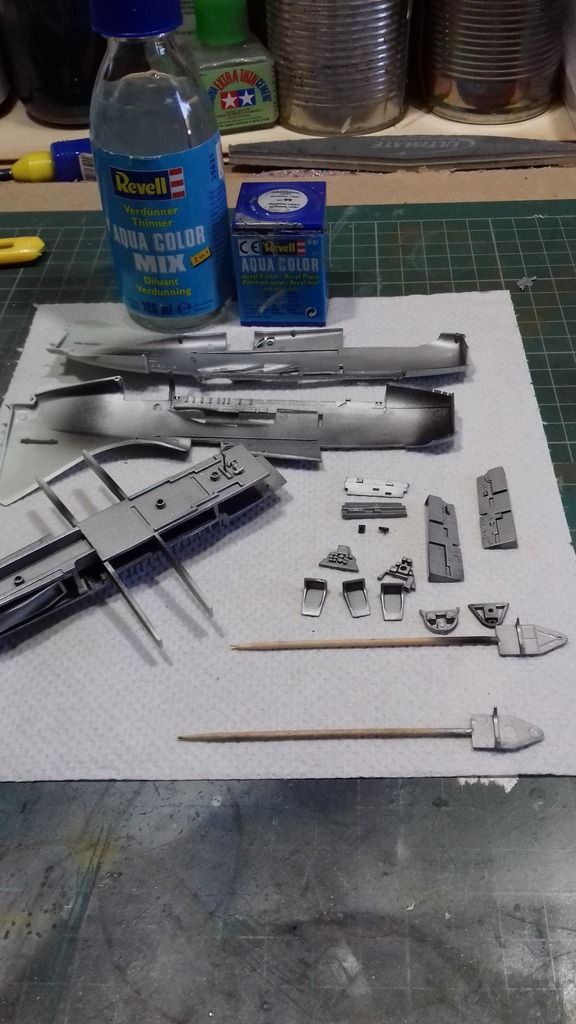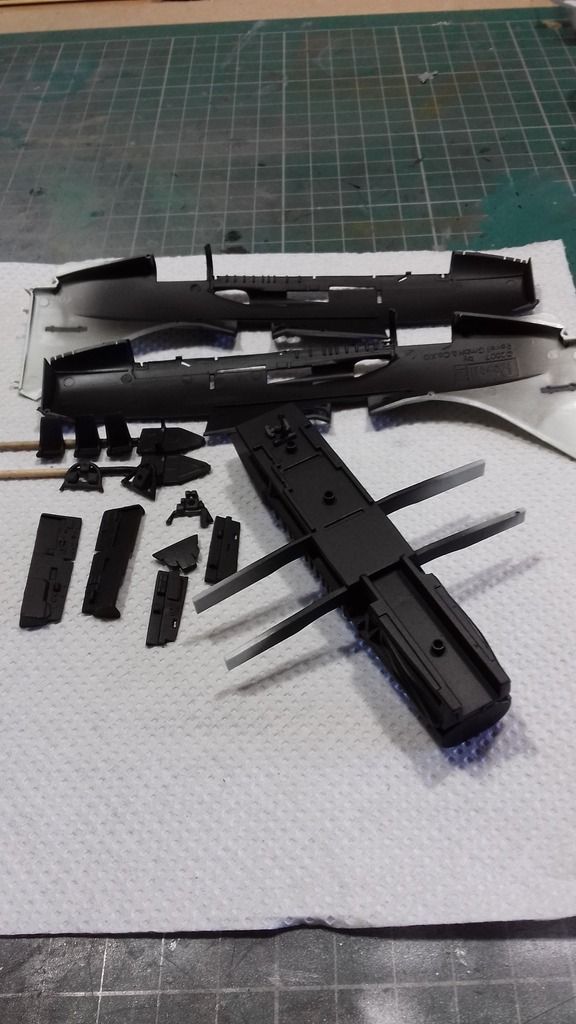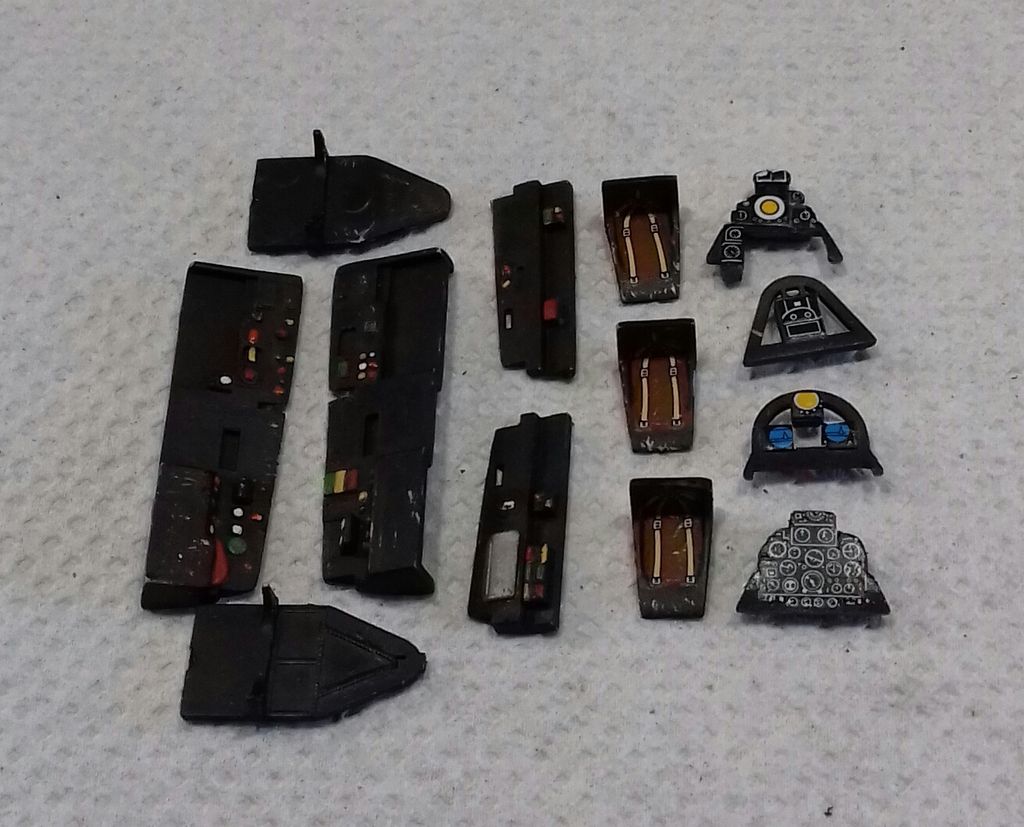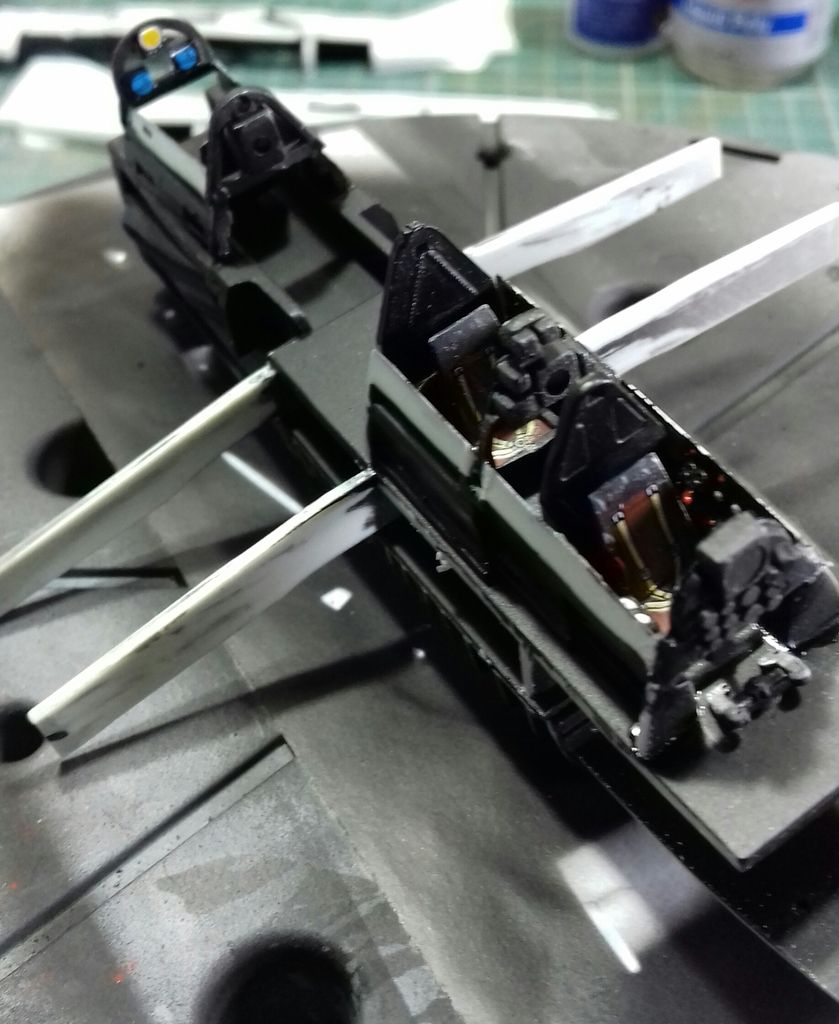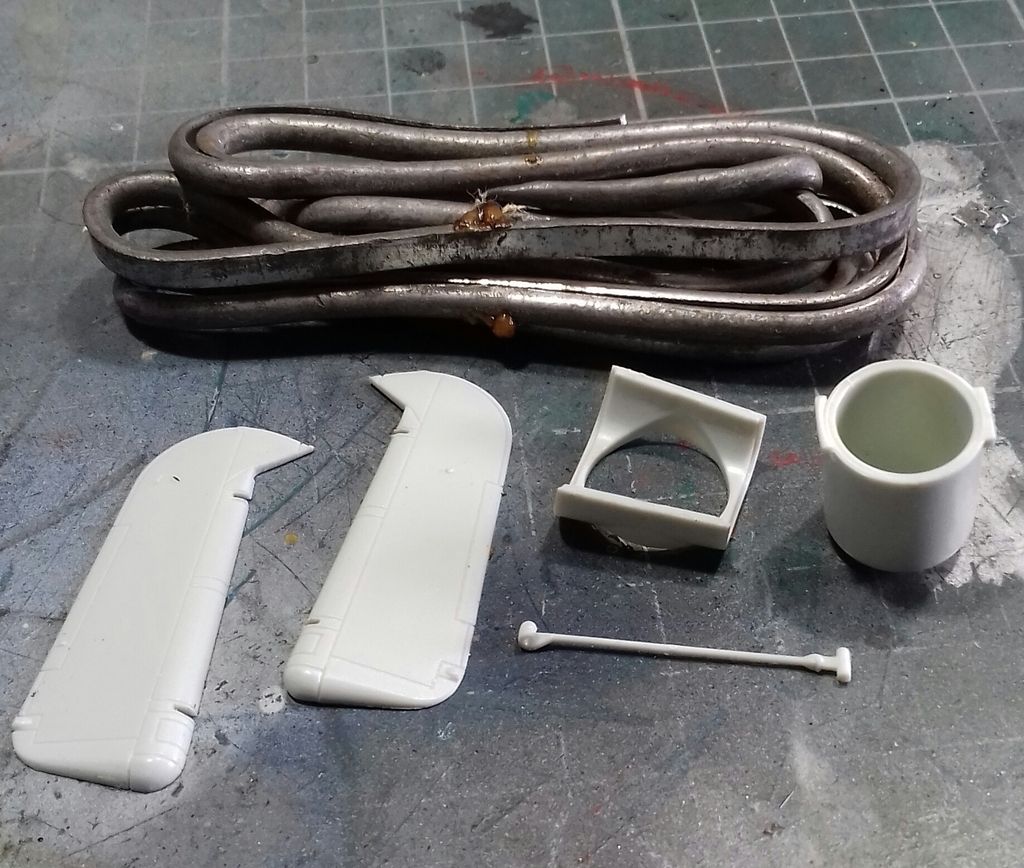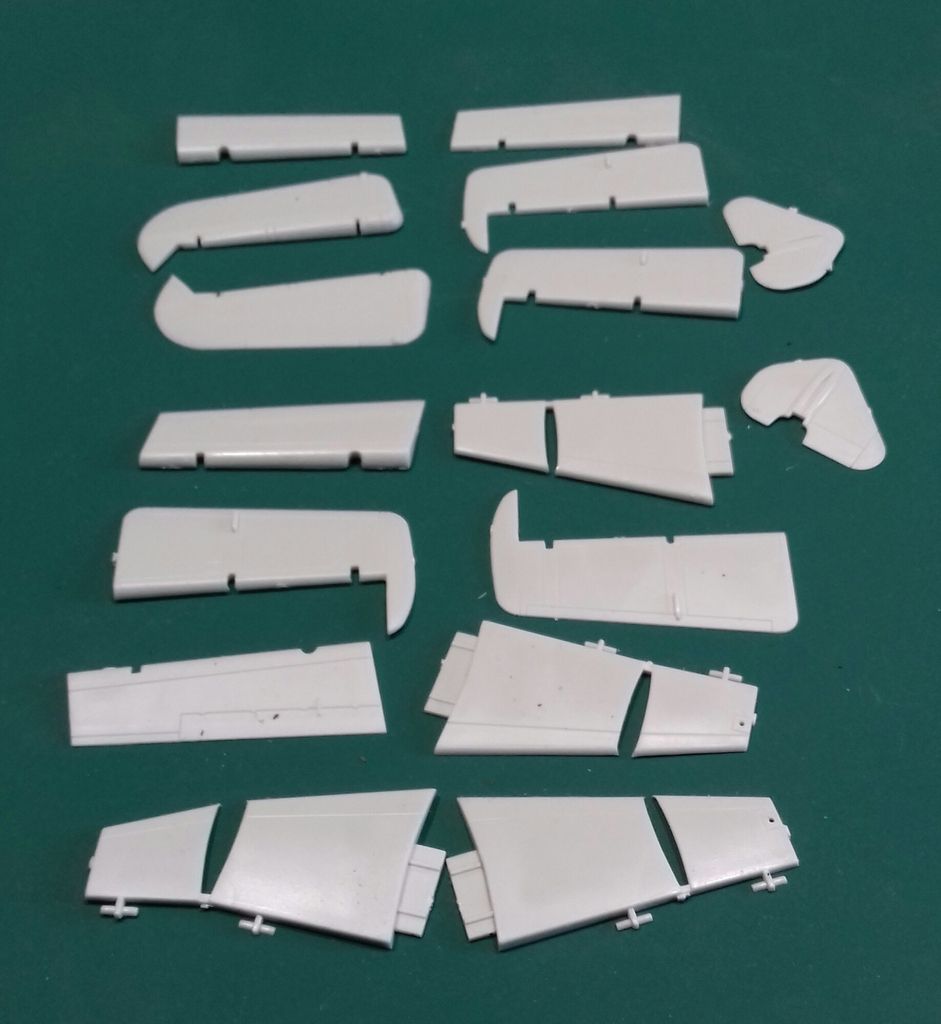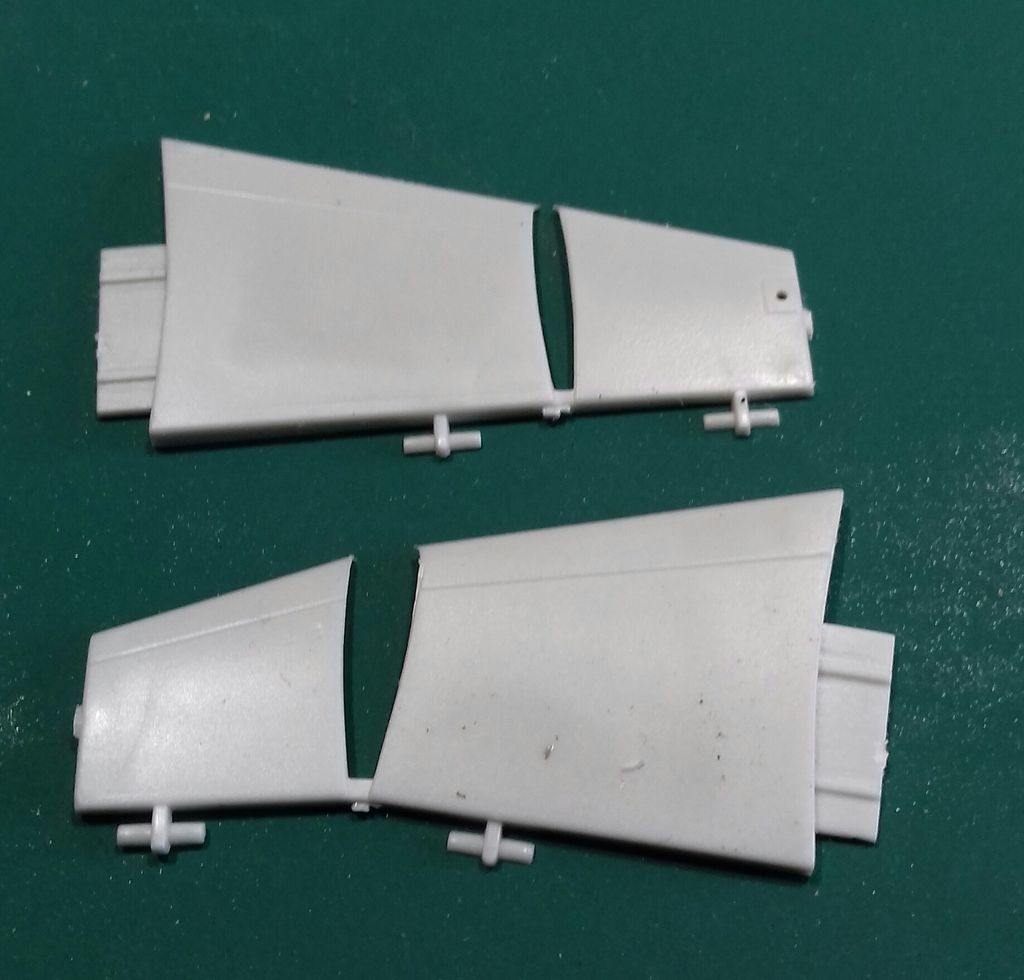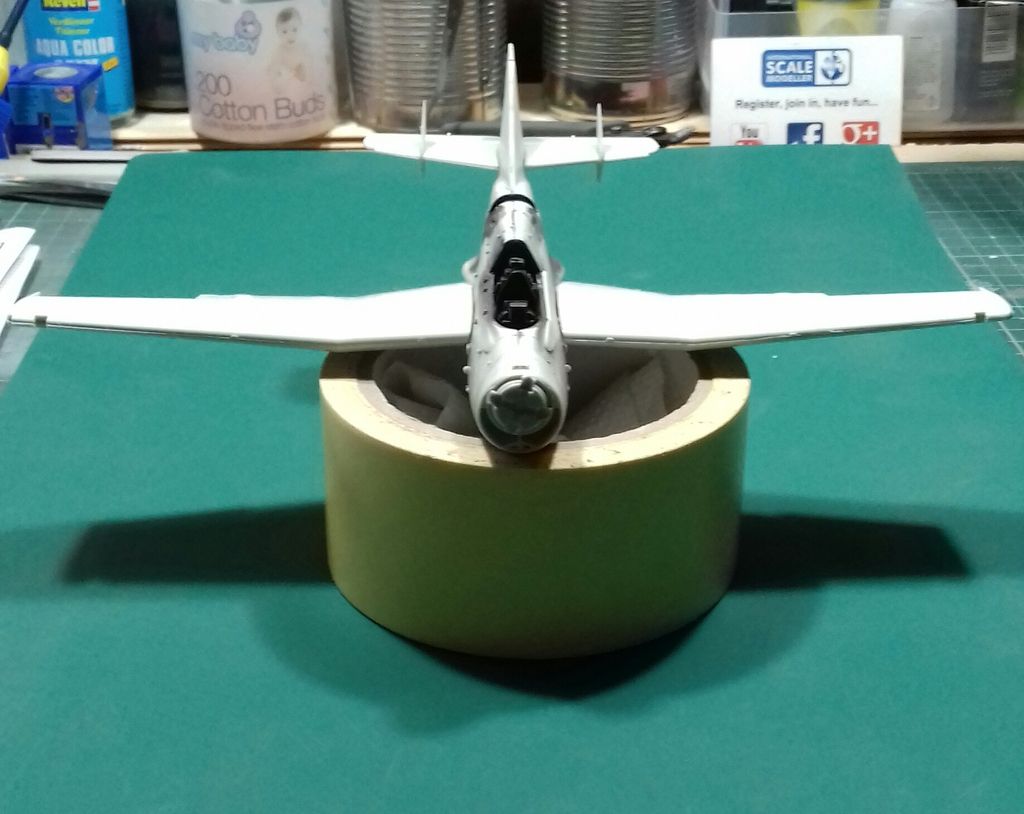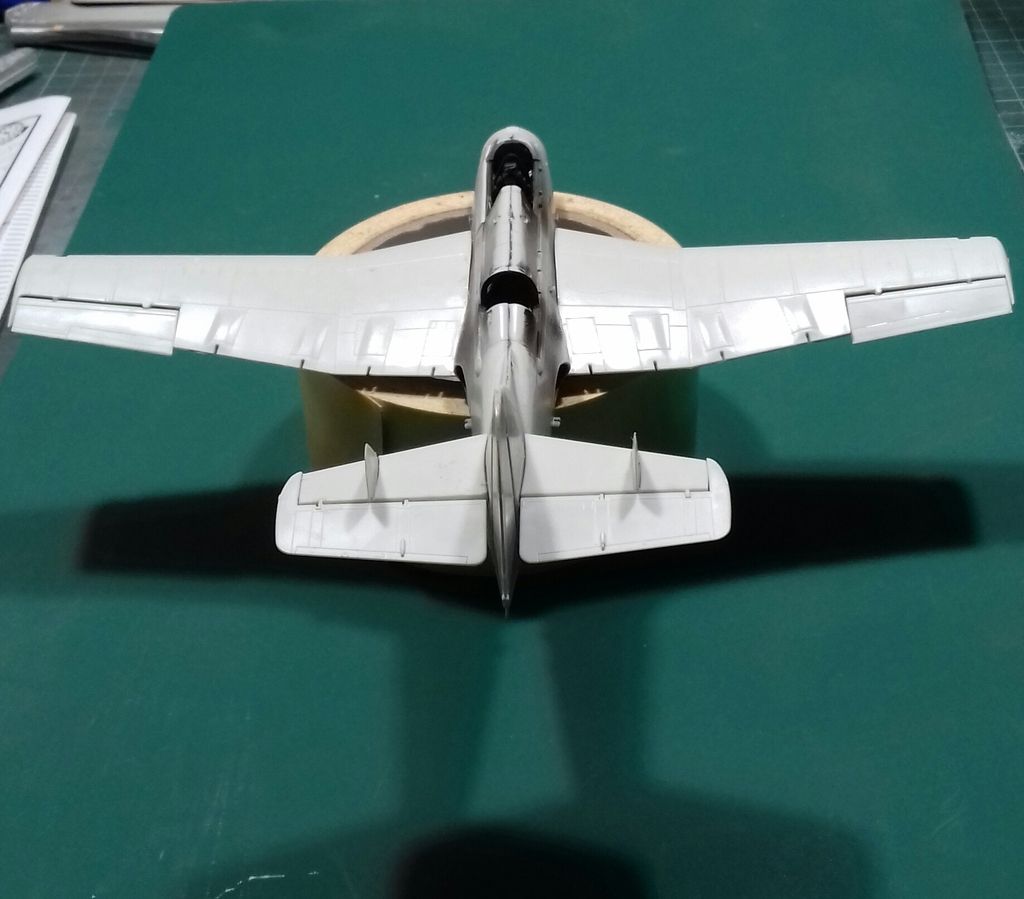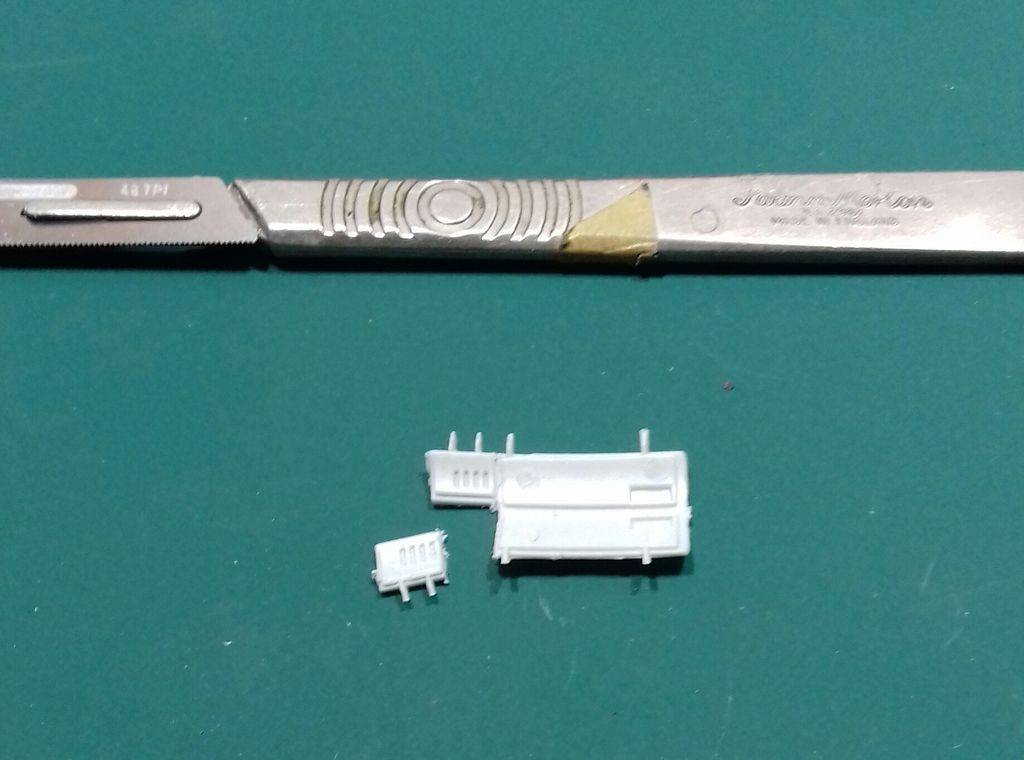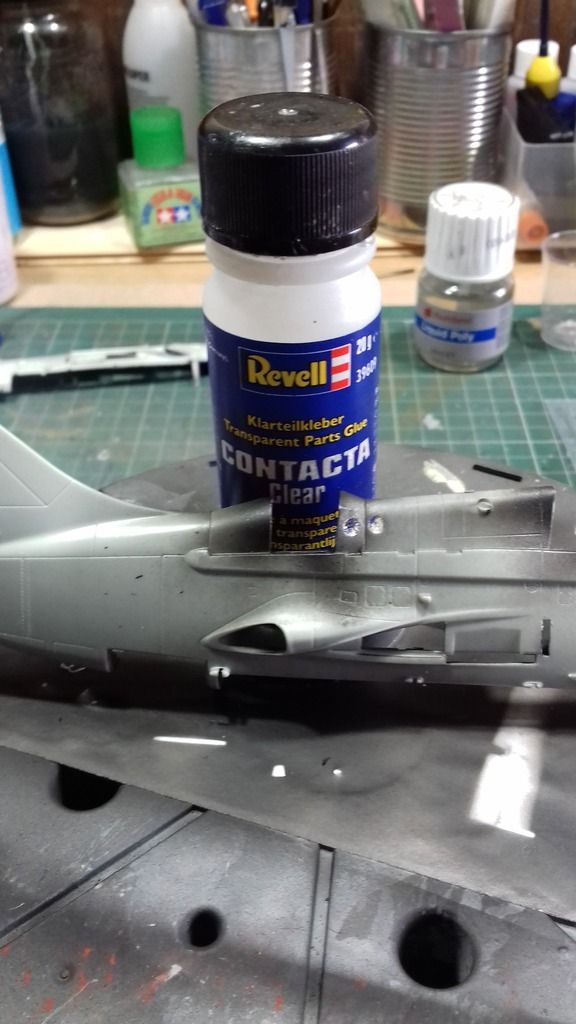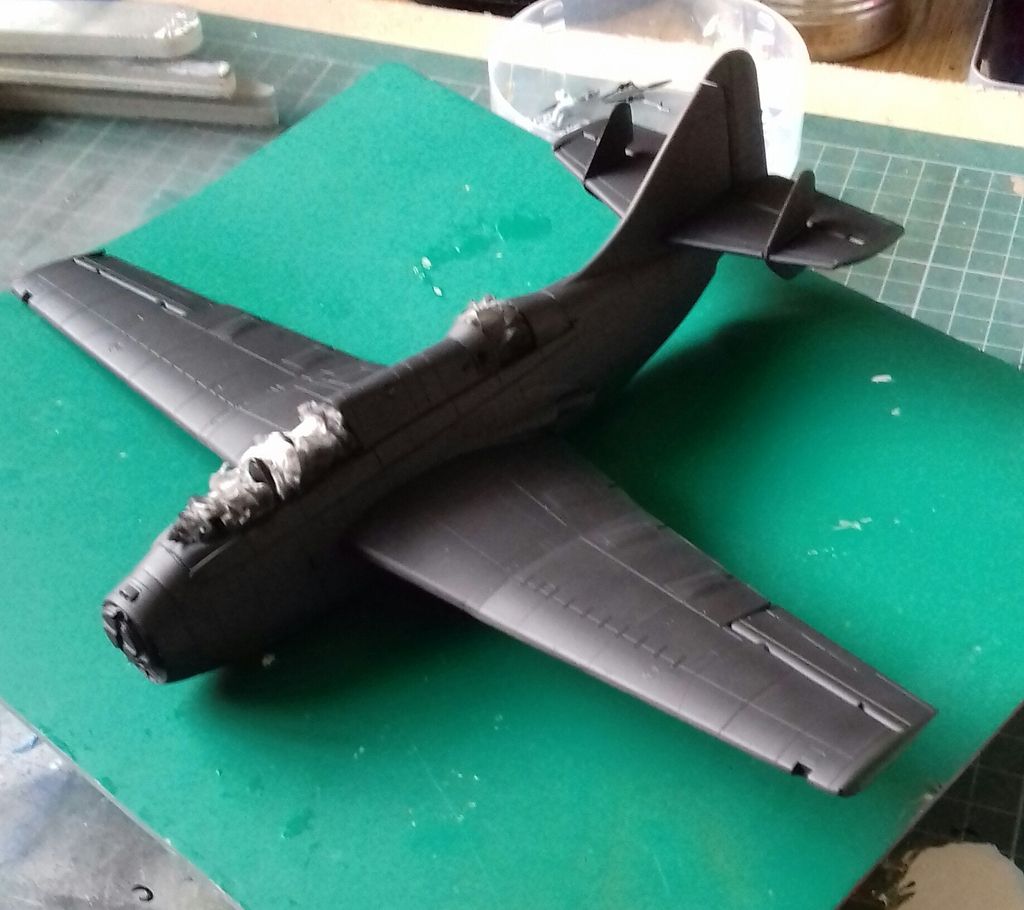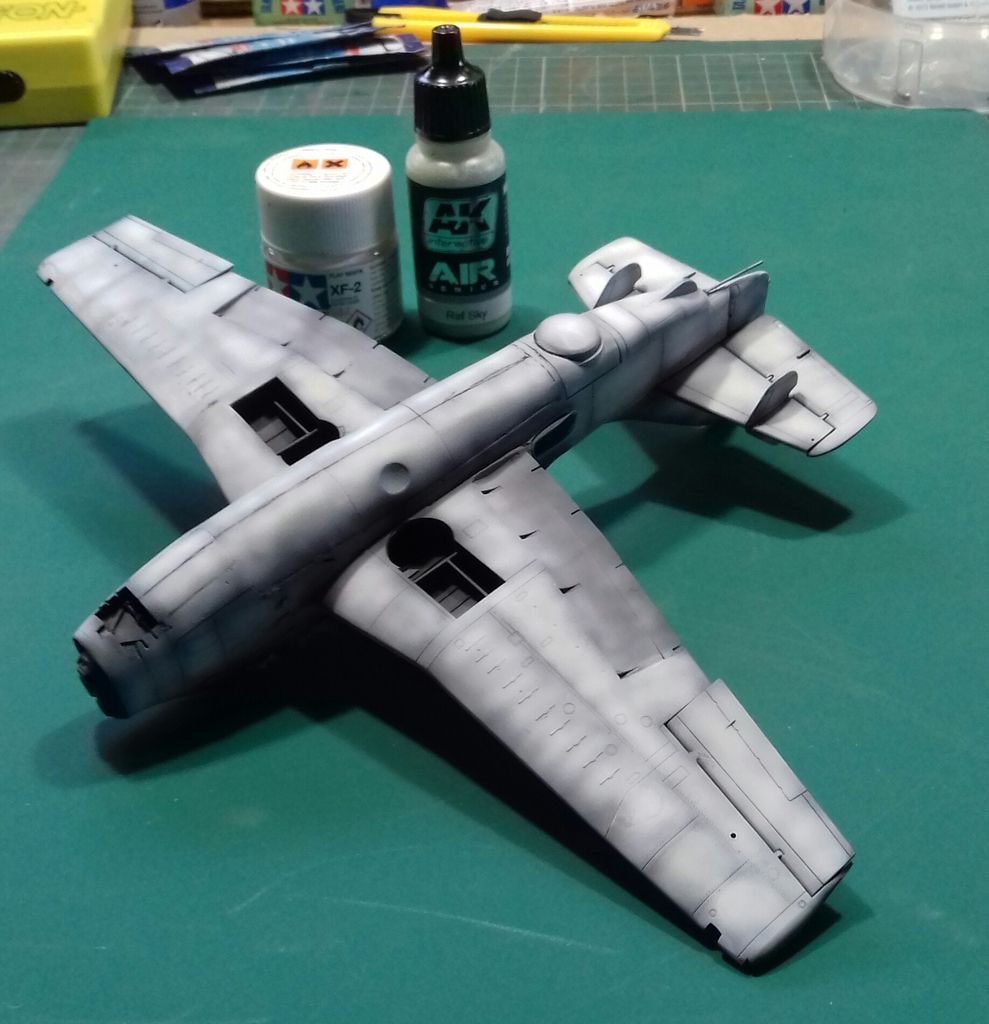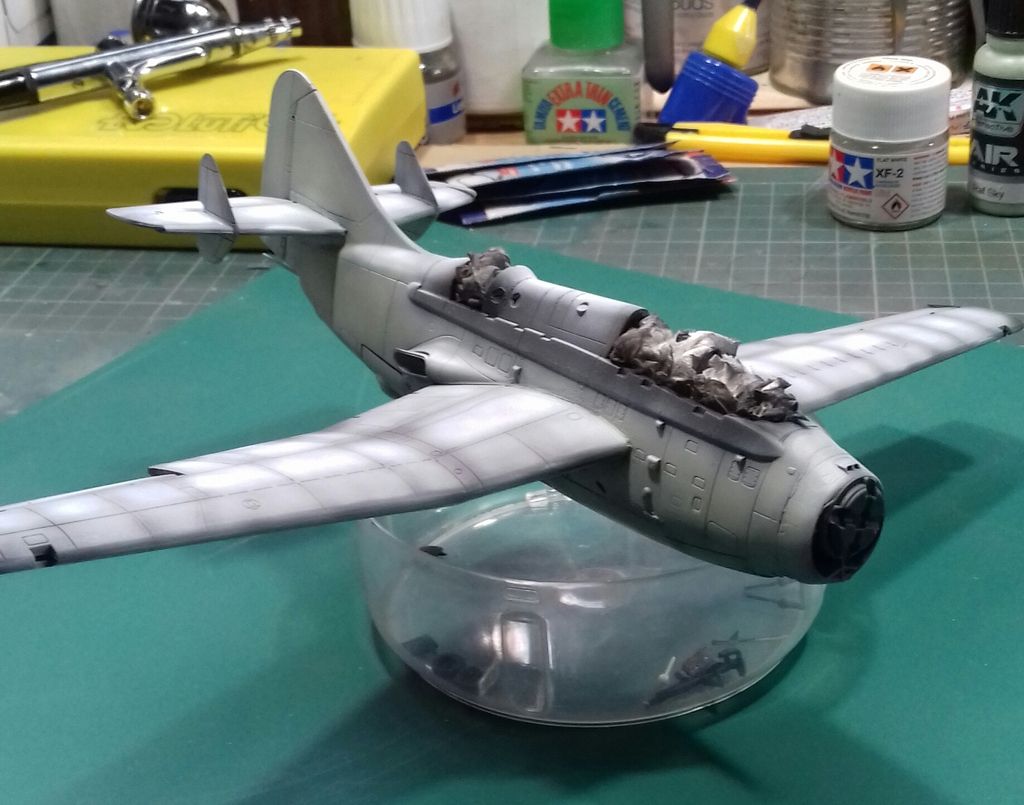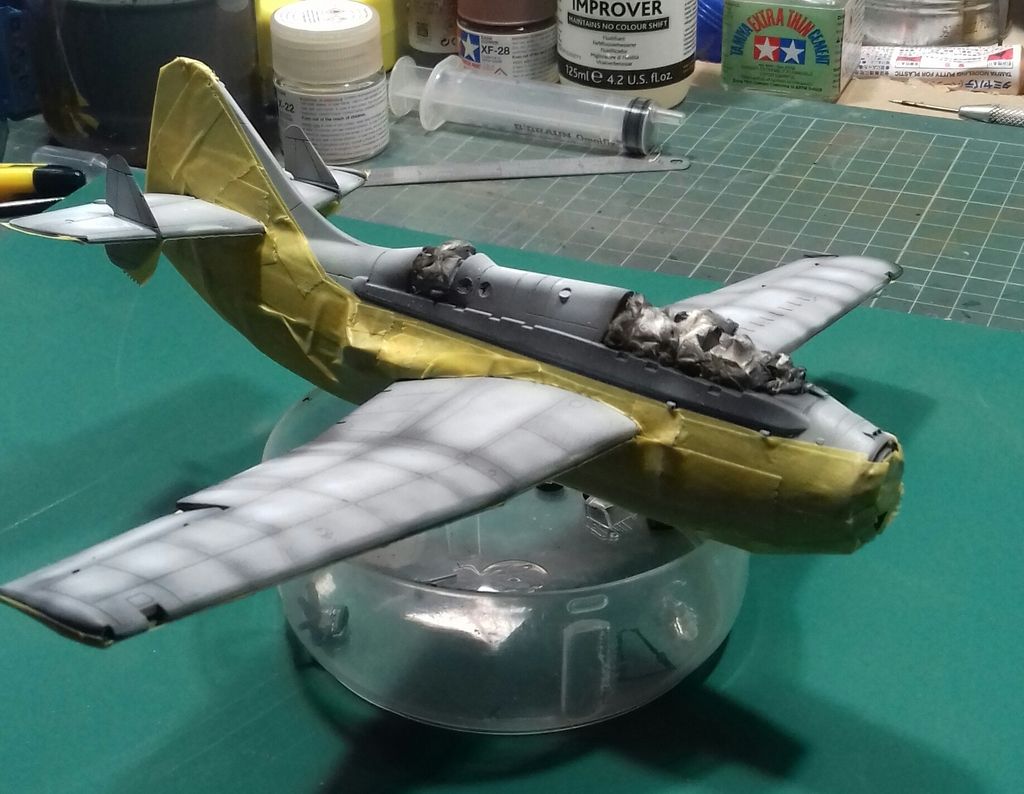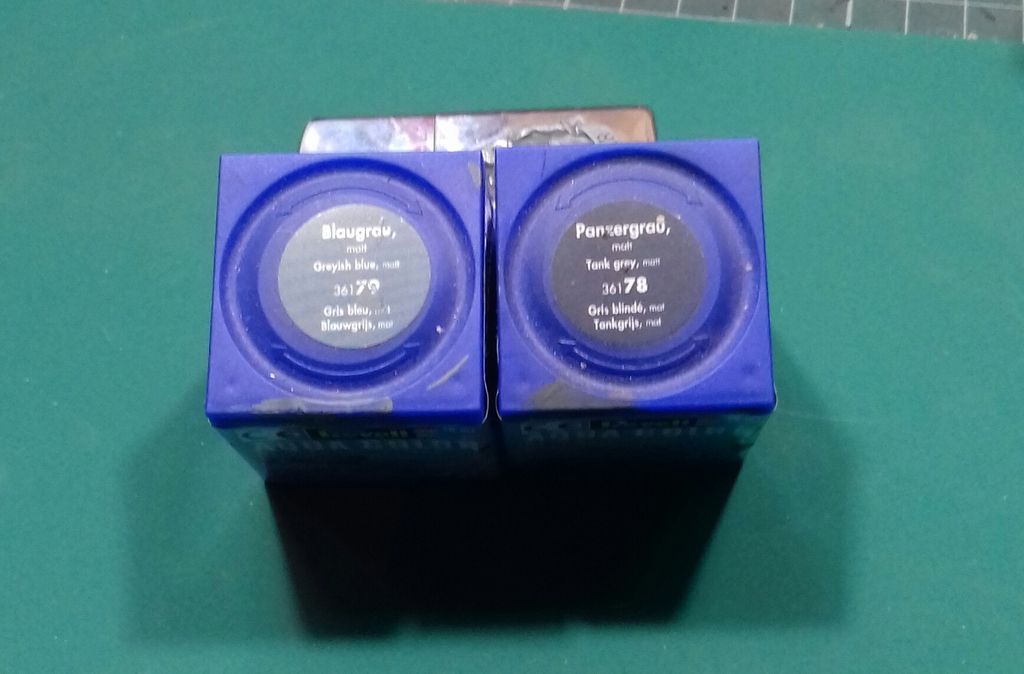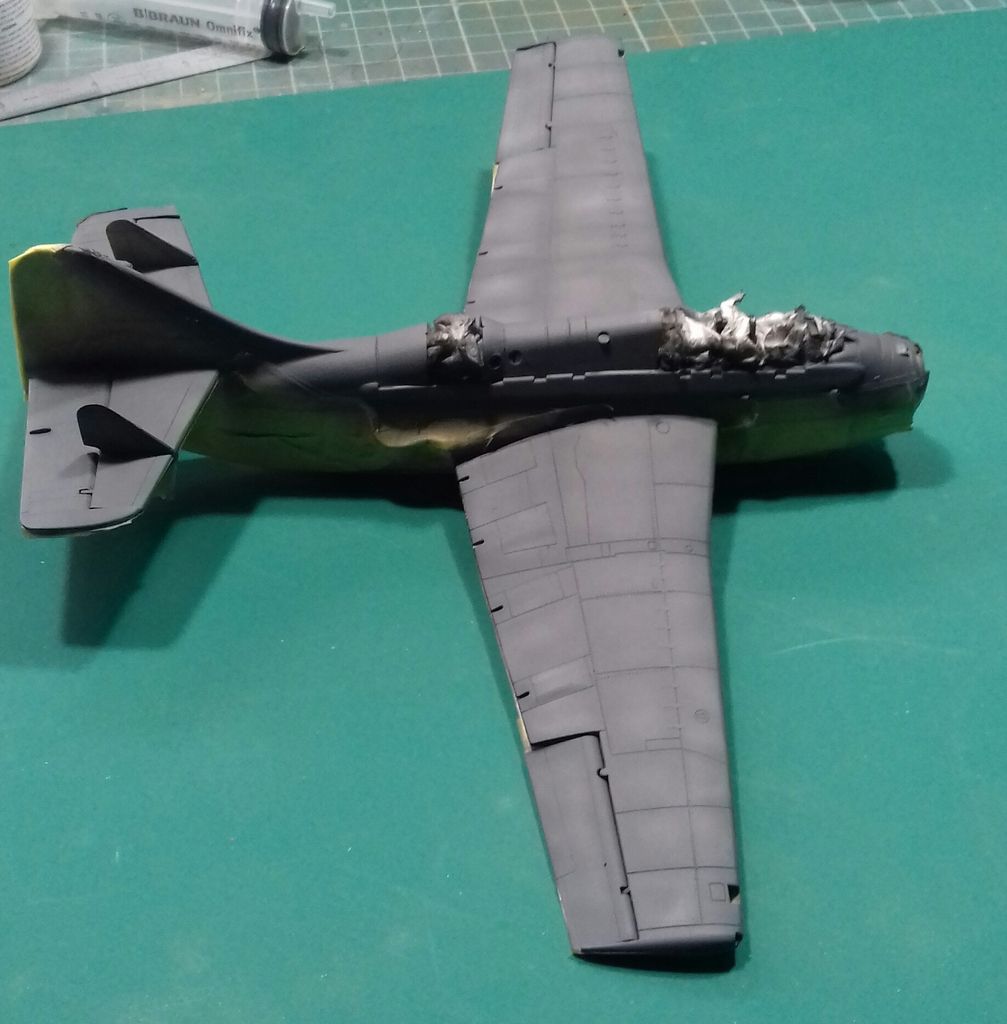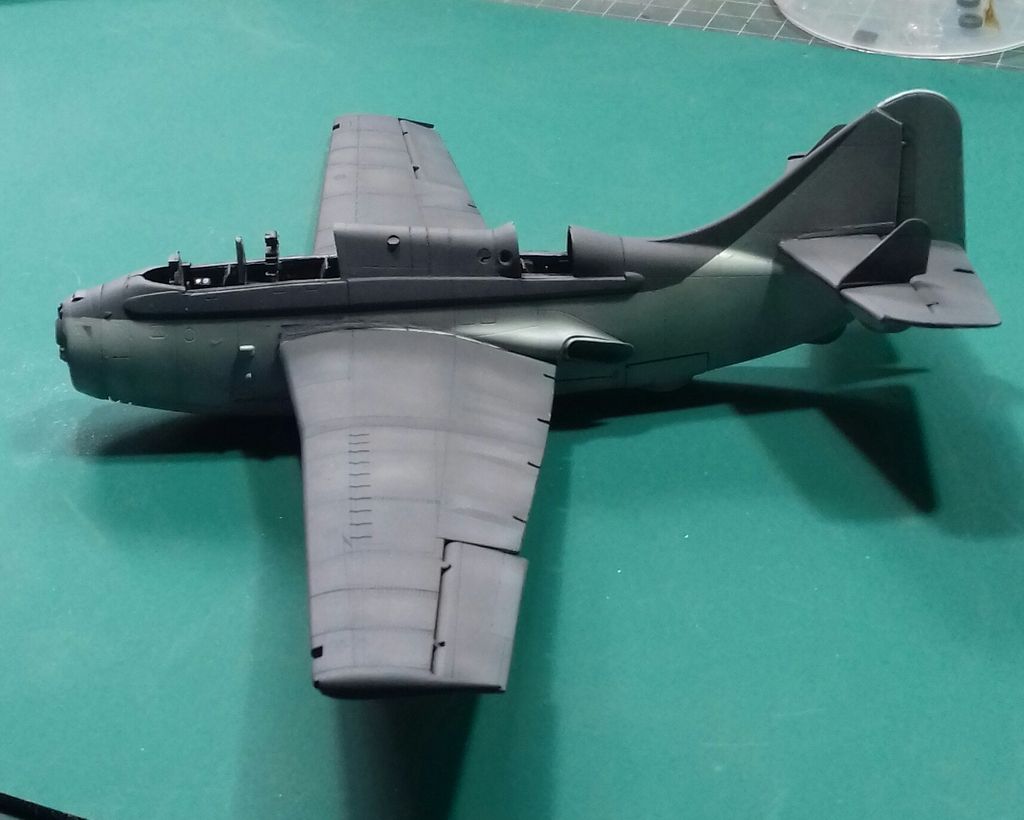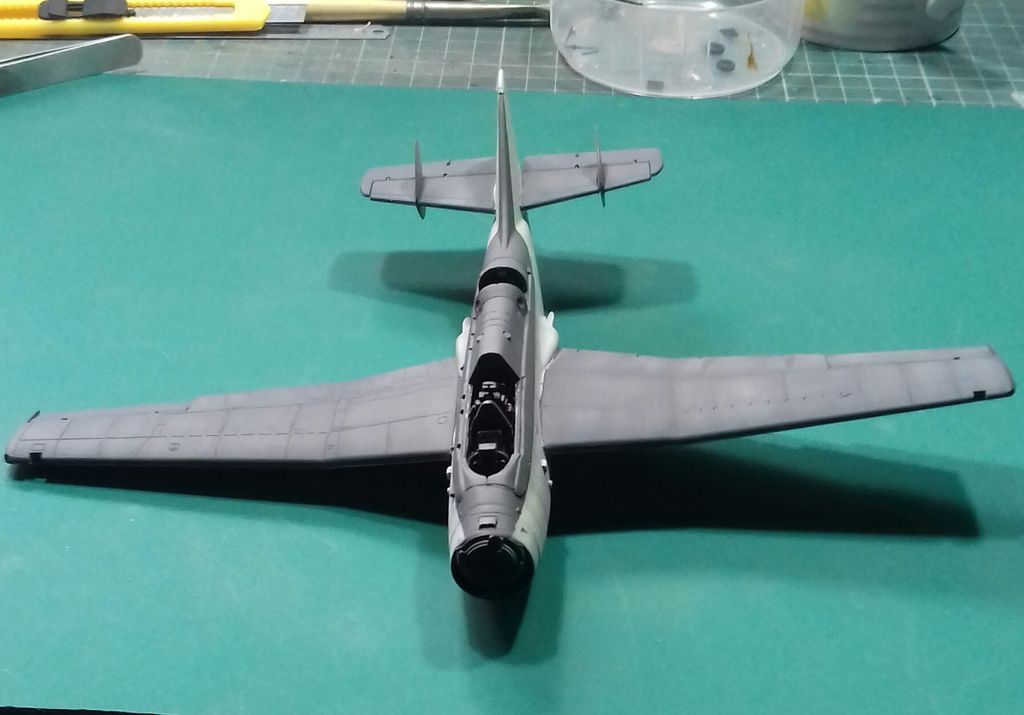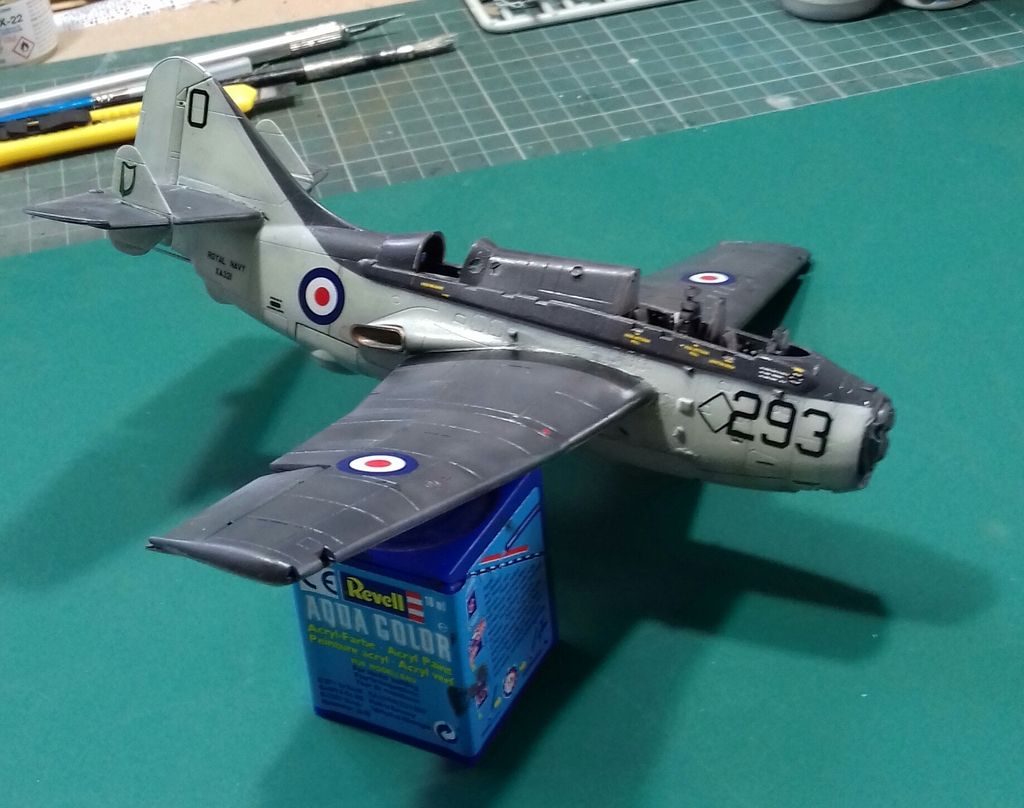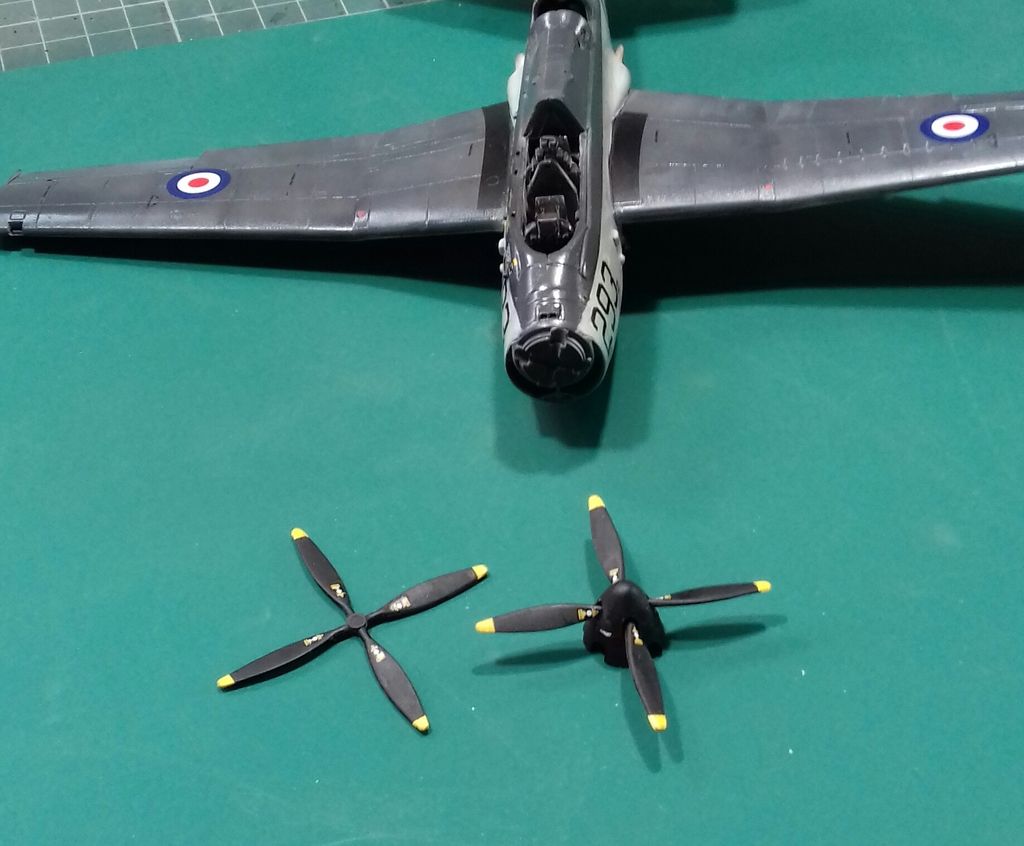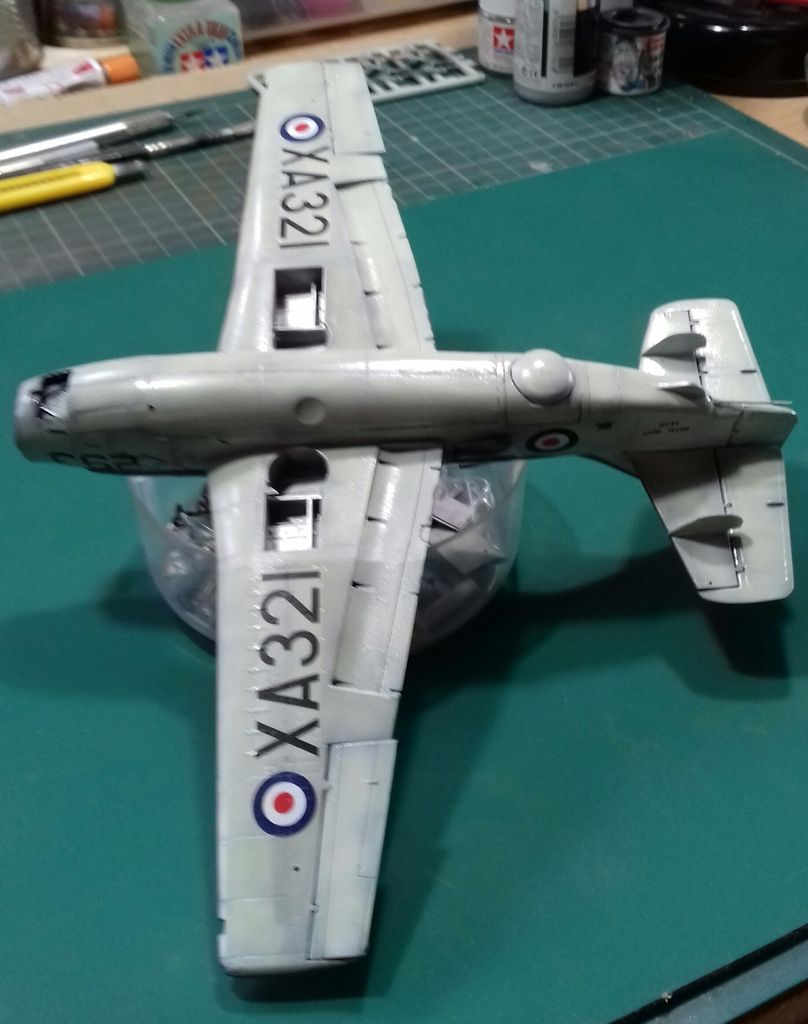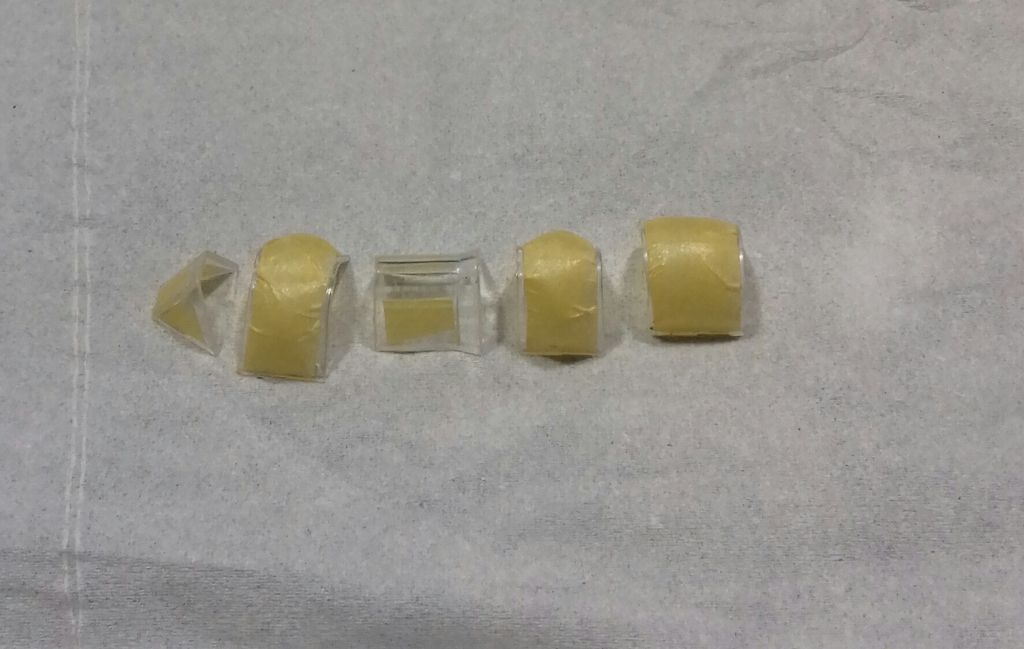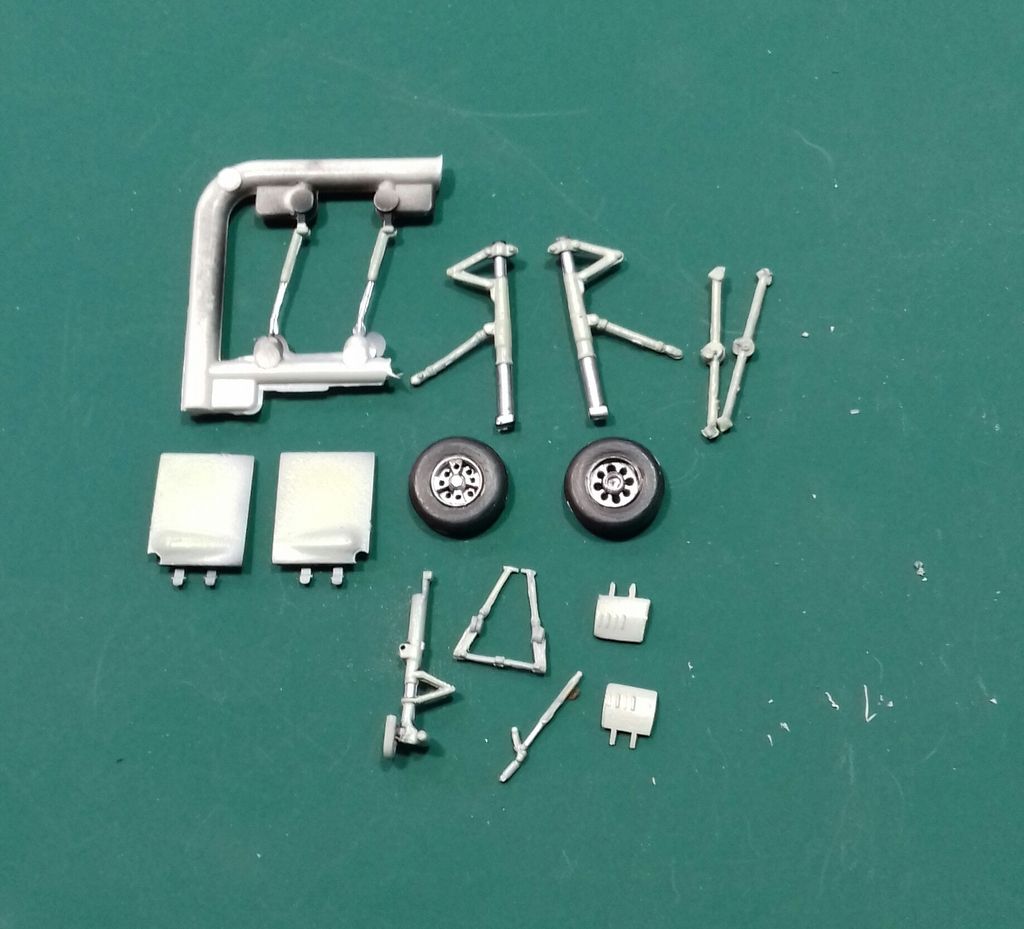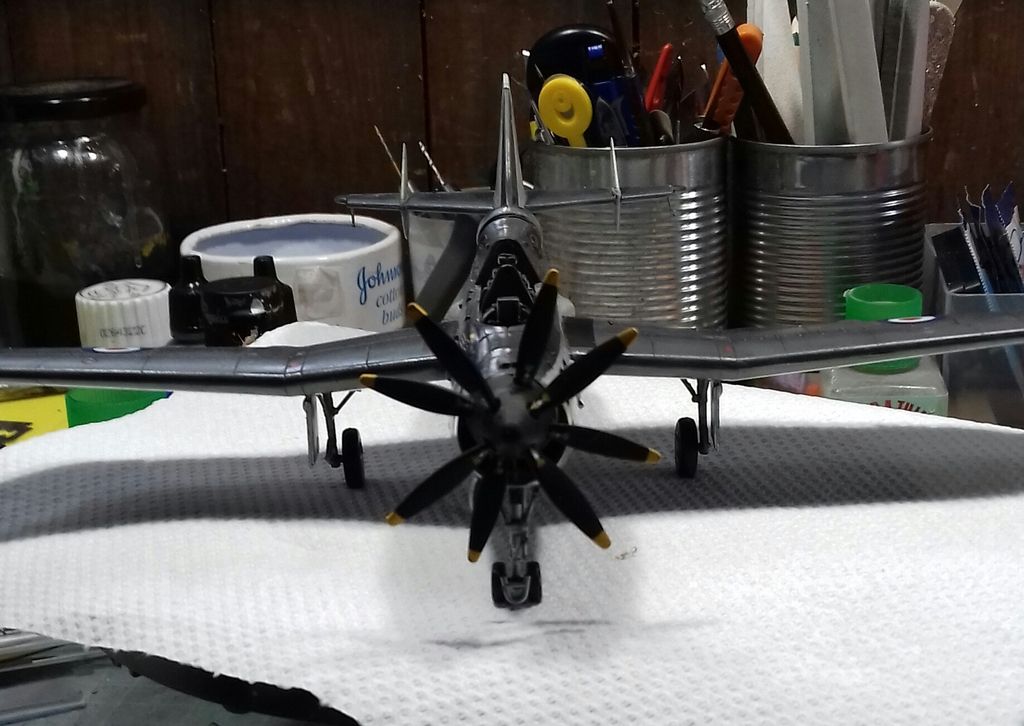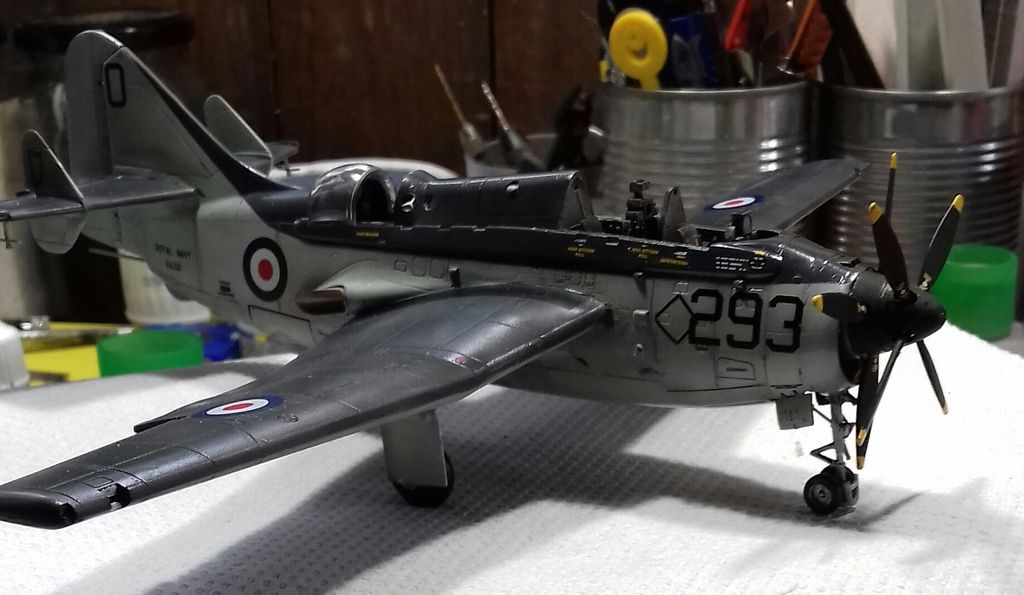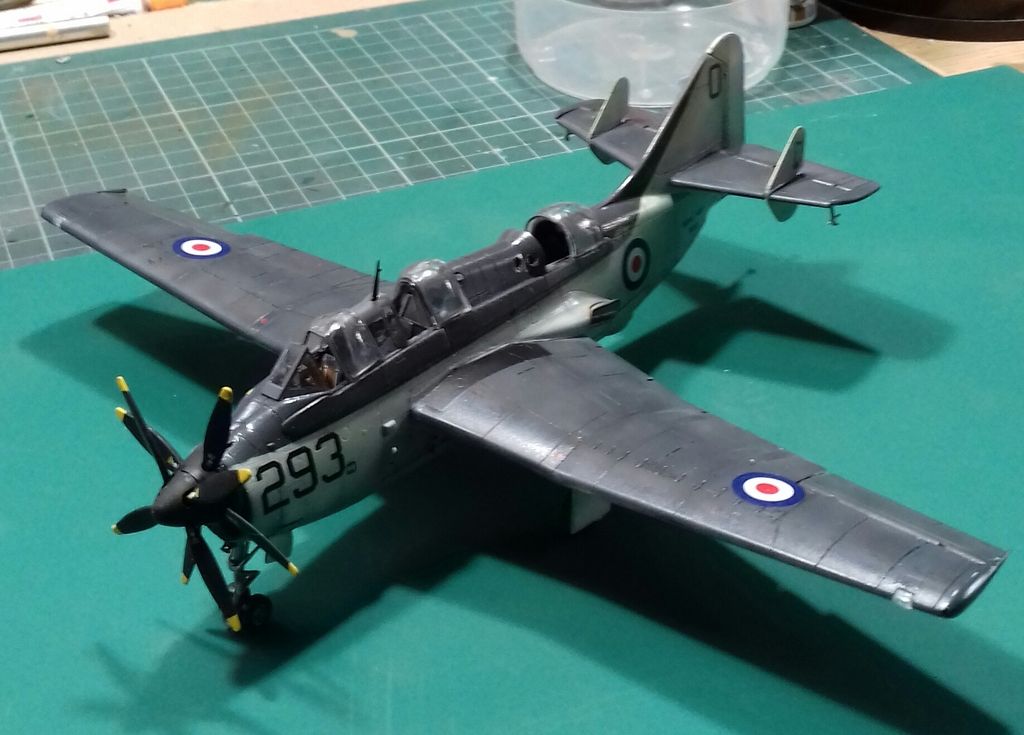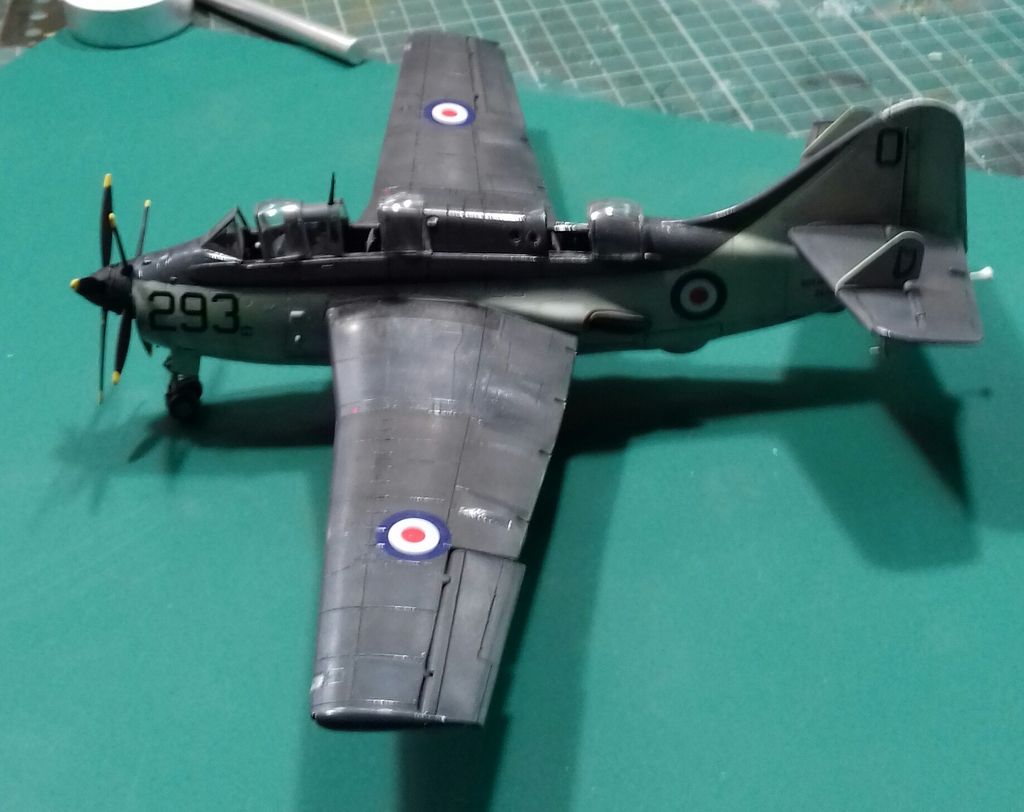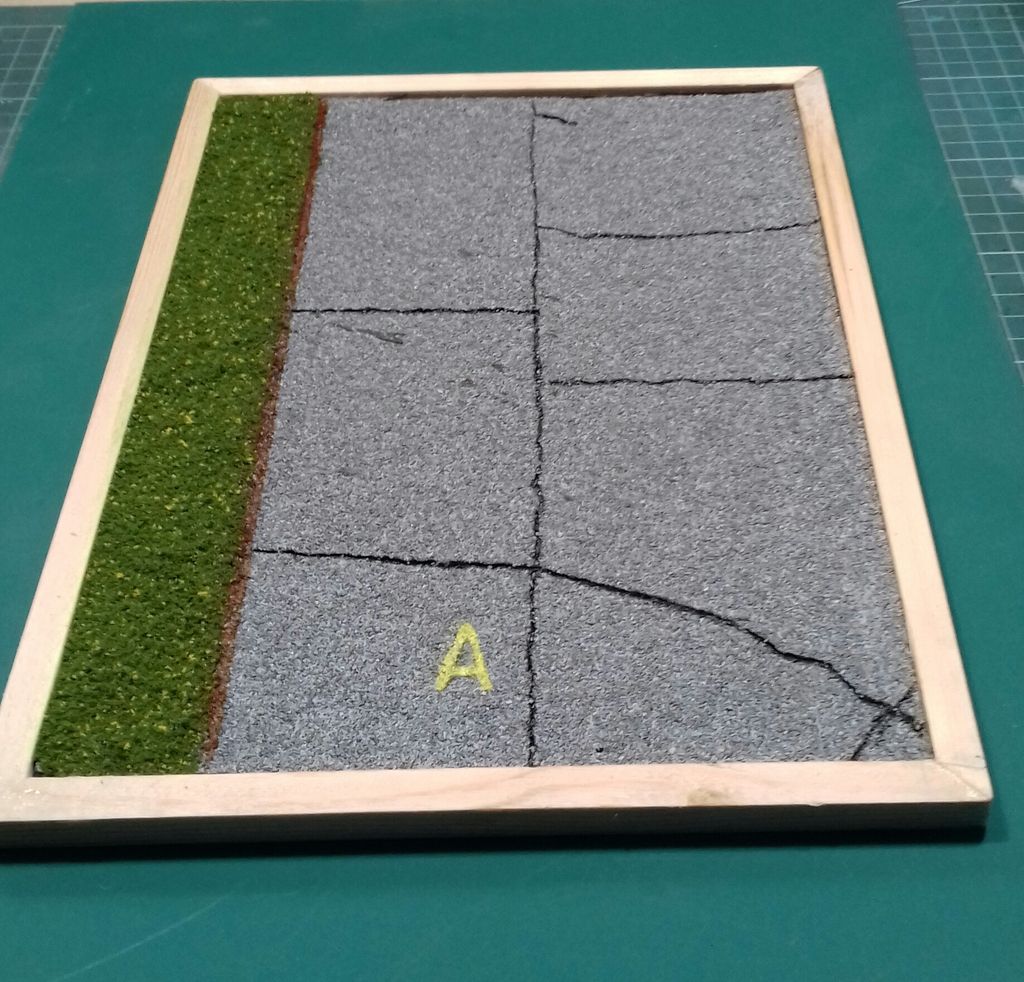this is what i will be building for this GB.
it looks to be a good kit ,there is some flash here and there , but it is a 10yr old kit .
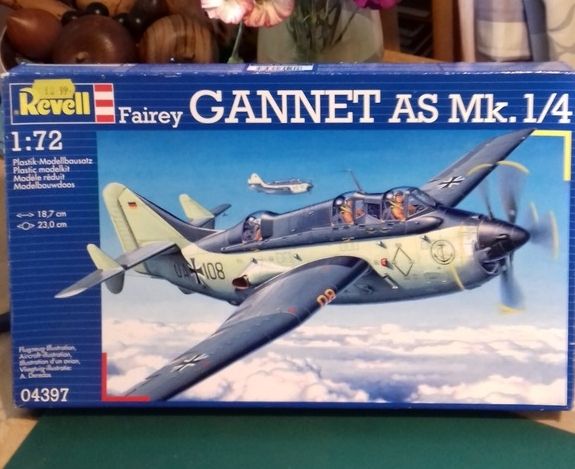
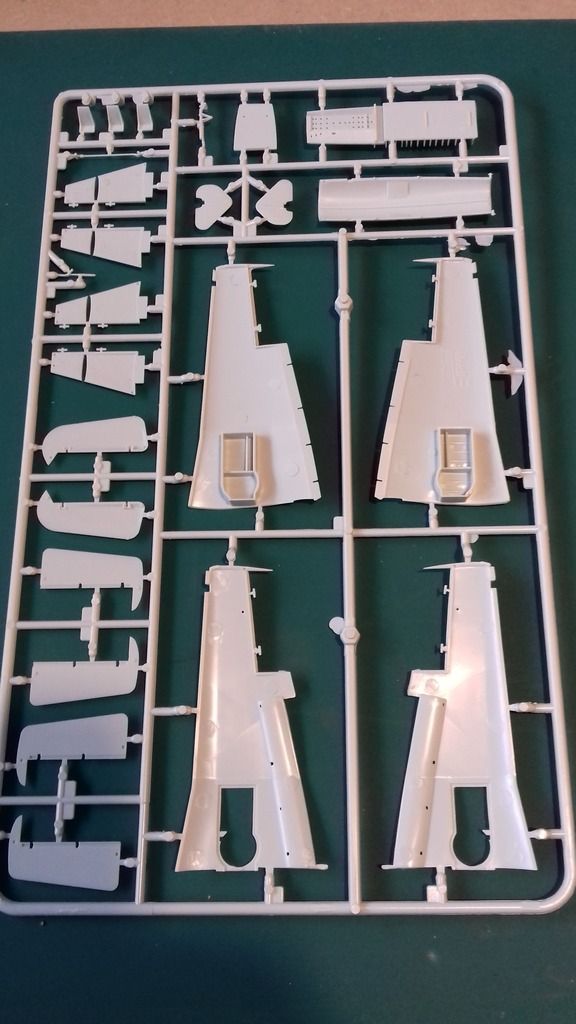
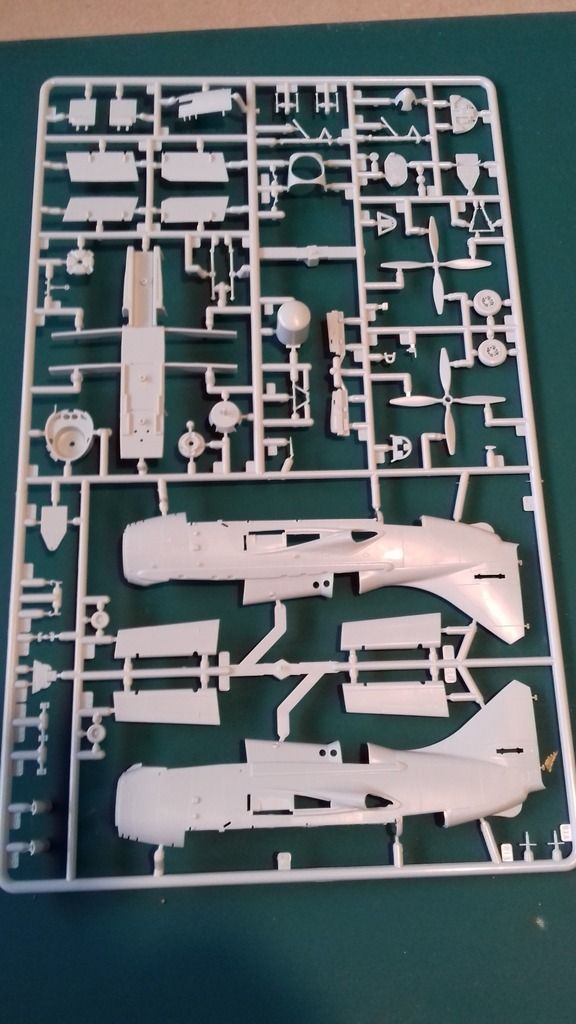
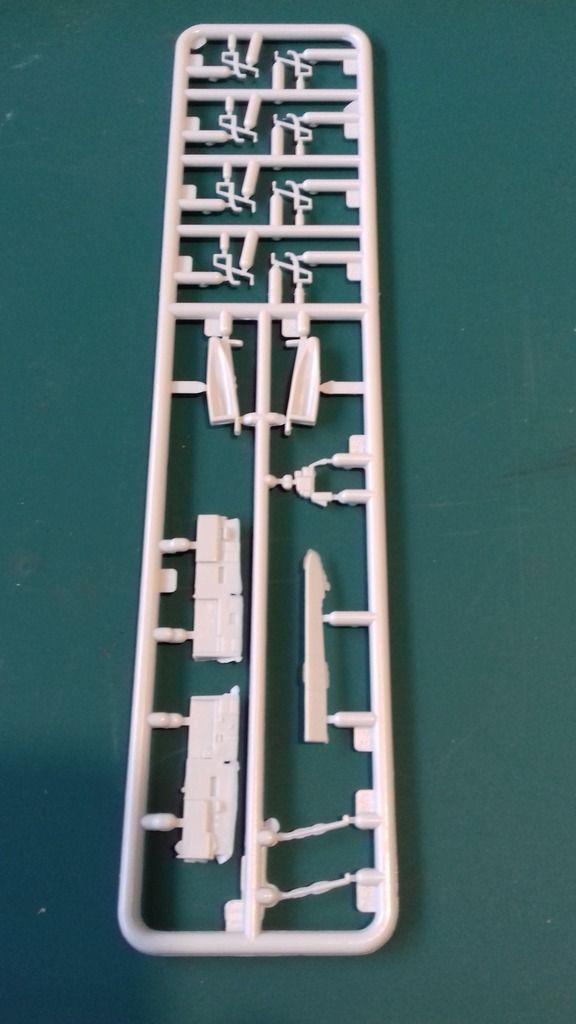
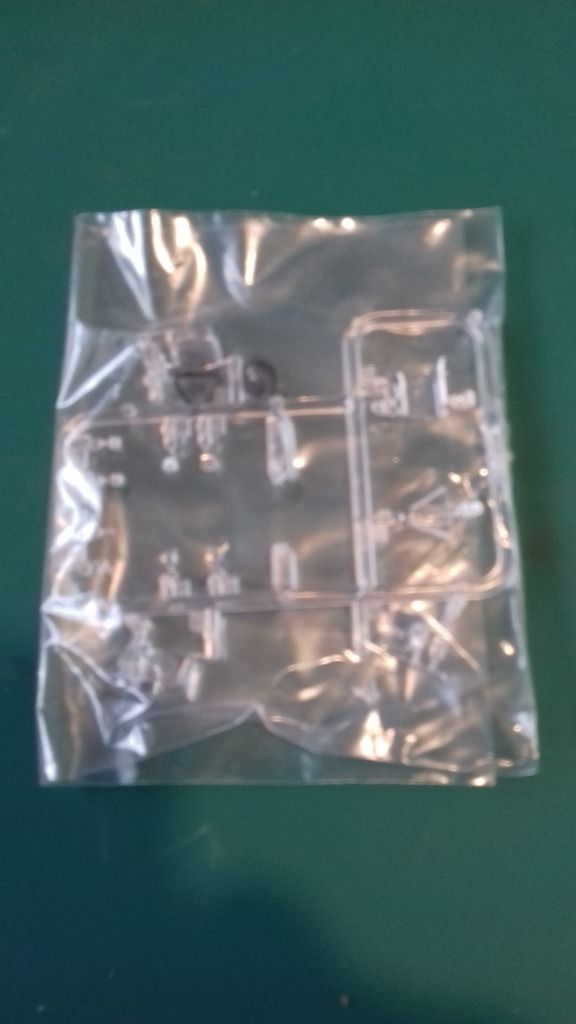
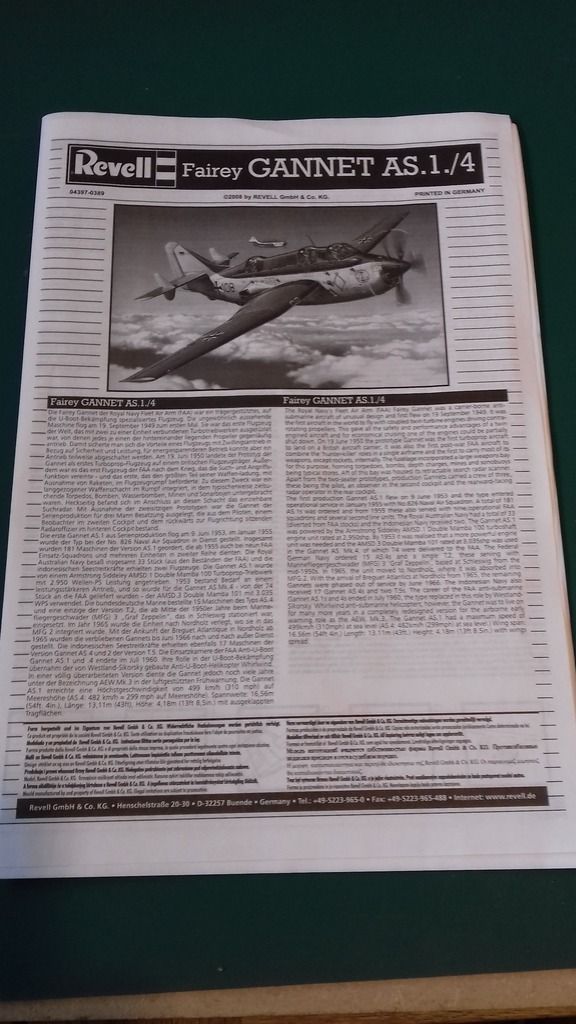

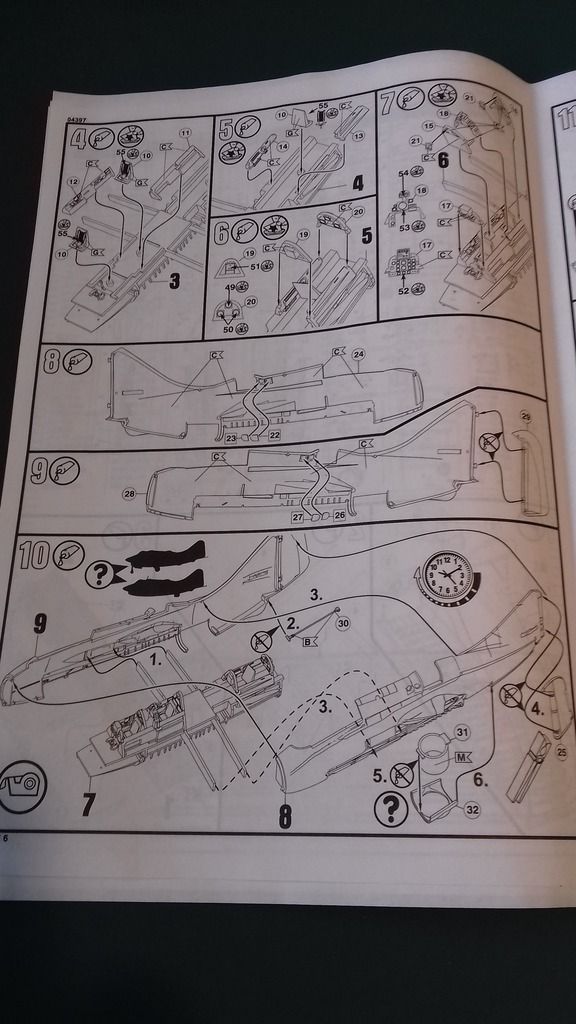
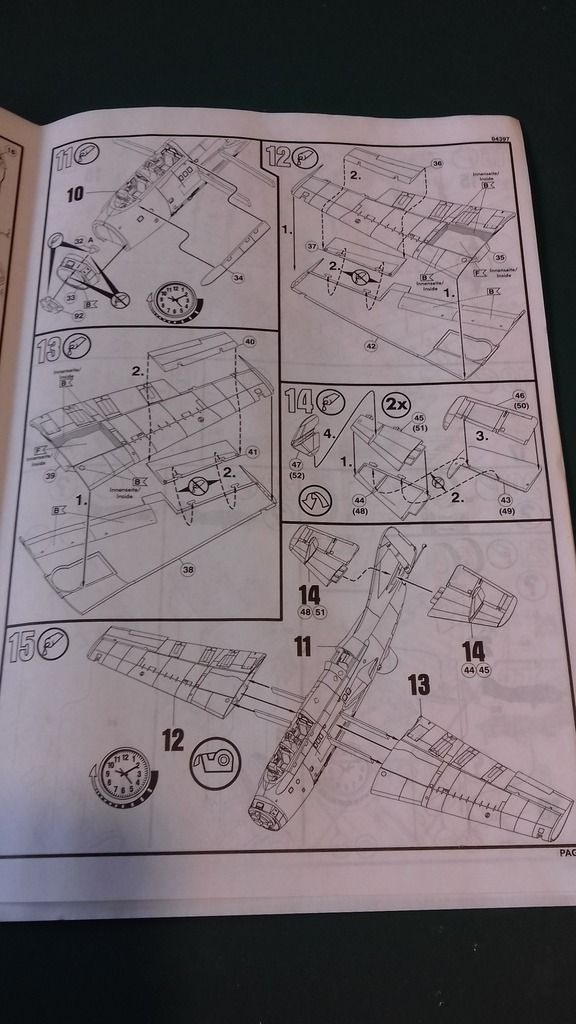




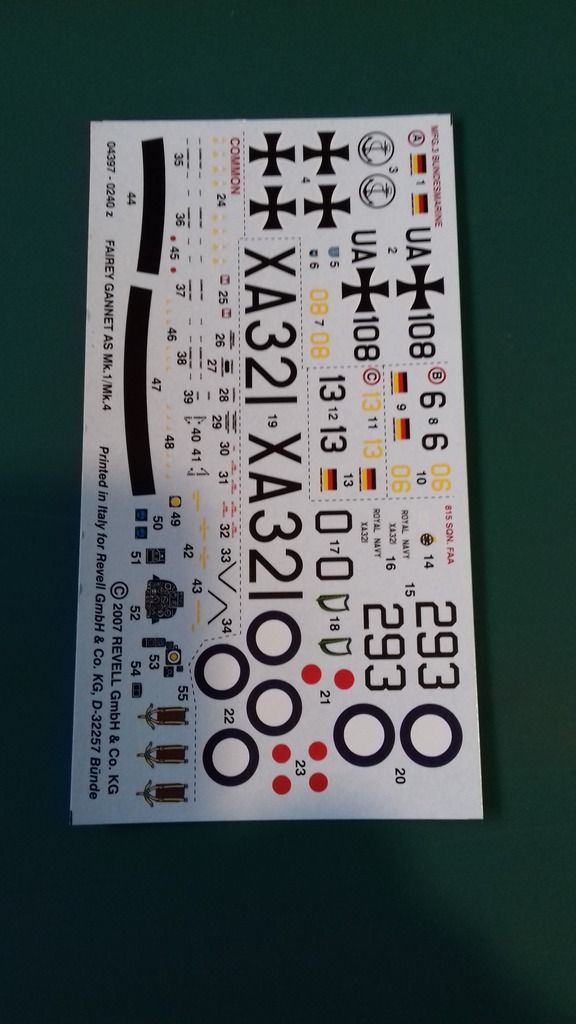 [/U
[/Uas you can see there are a few steps to this kit .
Now for some info.
Development
The Gannet was built in response to the 1945 Admiralty requirement GR.17/45, for which prototypes by Fairey (Type Q or Fairey 17, after the requirement) and Blackburn Aircraft (the Blackburn B-54 / B-88) were built.
After considering and discounting the Rolls-Royce Tweed turboprop, Fairey selected an engine based on the Armstrong Siddeley Mamba: the Double Mamba (or "Twin Mamba"), basically two Mambas mounted side-by-side and coupled through a common gearbox to coaxial contra-rotating propellers. Power was transmitted from each engine by a torsion shaft which was engaged through a series of sun, planet, epicyclic and spur gears to give a suitable reduction ratio and correct propeller-shaft rotation.
Newly assembled Gannet AS.4 at Manchester Airport, June 1956
The ASMD.1 engine (2,950 hp/2,200 kW) was used in the Gannet AS.1; ASMD.3 (3,145 hp/2,345 kW) in the AS.4; and ASMD.4 (3,875 hp/2,889 kW) in the AEW.3 variant. The Double Mamba engine could be run with one Mamba stopped to conserve fuel and extend endurance for cruise flight. The contra-rotating propellers meant that when only half of the Double Mamba was running there were no thrust asymmetry problems. The Mamba exhausts were situated on each side of the fuselage, at the root of the wing trailing edge. The gas-turbine engine could run on kerosene, "wide-cut" turbine fuel or diesel fuel, allowing the Admiralty to eliminate the dangerous high-octane petroleum spirit required to operate piston-engined aircraft from carriers.
In 1958 the Gannet was selected to replace the Douglas Skyraider in the AEW role. In order to accommodate the systems required, the Gannet underwent a significant redesign that saw a new version of the Double Mamba installed, new radome mounted under the aircraft, the tailfin increased in area, the undercarriage lengthened and the weapons bay removed. A total of 44 aircraft (plus a single prototype) of the AEW.3 version were produced
Operational history
The prototype first flew on 19 September 1949 and made the first deck landing by a turboprop aircraft, on HMS Illustrious on 19 June 1950, by pilot Lieutenant Commander G. Callingham. After a further change in operational requirements, with the addition of a radar and extra crew member, the type entered production in 1953 and initial deliveries were made of the variant designated AS.1 at RNAS Ford in April 1954. A trainer variant (T.2) WN365 first flew in August 1954. The RN's first operational Gannet squadron (826 NAS) was embarked on HMS Eagle. The initial order was for 100 AS.1 aircraft. A total of 348 Gannets were built, of which 44 were the heavily modified AEW.3. Production was shared between Fairey's factories at Hayes, Middlesex and Heaton Chapel, Stockport / Manchester (Ringway) Airport.
An Australian Gannet AS.1 on the USS Philippine Sea in 1958.
By the mid-1960s, the AS.1s and AS.4s had been replaced by the Westland Whirlwind HAS.7 helicopters. Gannets continued as Electronic countermeasures aircraft: the ECM.6. Some AS.4s were converted to COD.4s for Carrier onboard delivery—the aerial supply of mail and light cargo to the fleet.
The Royal Australian Navy purchased the Gannet AS.1 (36 aircraft). It operated from the aircraft carrier HMAS Melbourne and the shore base HMAS Albatross near Nowra, New South Wales.
Indonesia bought a number of AS.4 and T.5s (re-modelled from RN AS.1s and T.2s) in 1959. Some Gannets were later acquired by various other countries.
West Germany bought 15 Gannet AS.4s and one T.5 in 1958. They operated as the anti-submarine squadron of Marinefliegergeschwader 2 (2nd Naval Fighter Wing) from Jagel and Sylt. In 1963 the squadron was reassigned to MFG 3 at Nordholz Naval Airbase until the Gannets were replaced by the Breguet Br.1150 Atlantic in 1966.
OK on with the build .
[URL=http://s1150.photobucket.com/user/marti ... z.jpg.html]

built in wing spar thats always good , here are the first parts cleaned and ready .
bomb bay , upper deck and nose wheel bay .
had to sand the wing spars a bit so that thay would slide in and out ok, because there will be a far bit of dry fitting going on.

dry fitting went ok so far, looks like i will not need the filler .
next up fitting the control pedels and joy stick , and the excuset out lets ,make sure you get these the right way round.
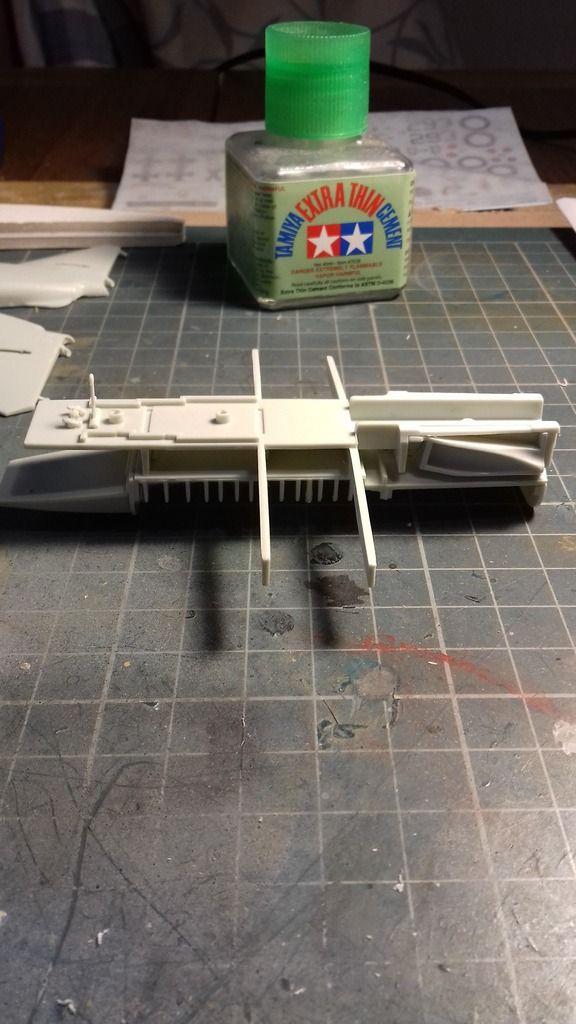
The next step was to cut of and clean up the cockpit parts and seats.
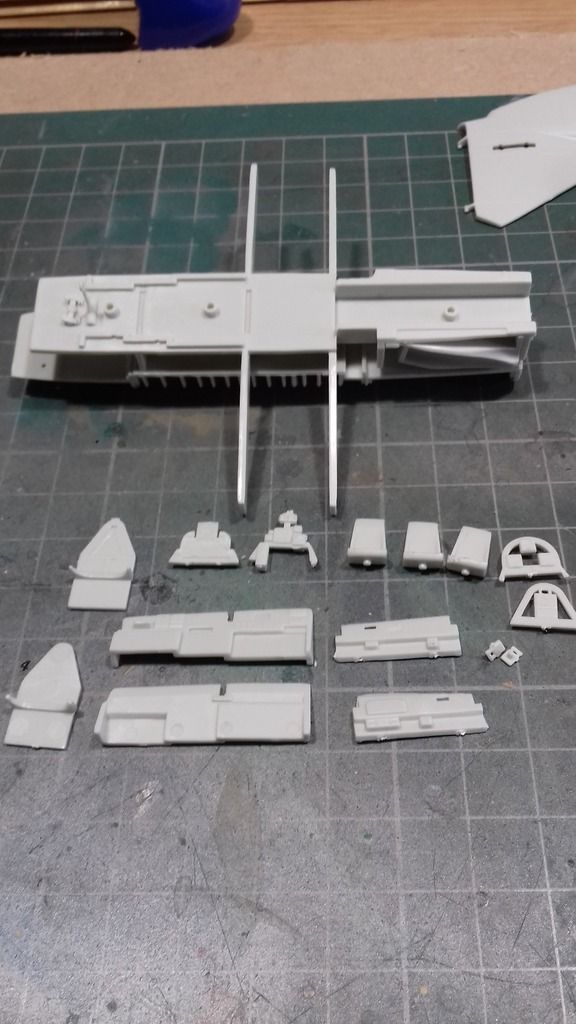
i will be using the decals for the control panals so sanded of the moulded details.
then primed it all in UMP primer.

so there you have it , so far so good .
thanks for coming









